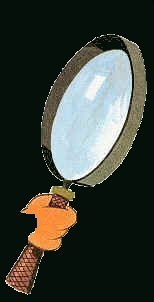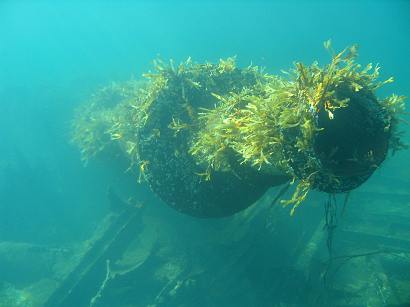What to look for diving an unidentified wreck

Shipwrecks
diving into history
Technical
Page
What to look for diving an unidentified wreck 
Most dive clubs seem to specialise in at least one of them - the ‘wooden yacht’, the ‘conger eel wreck’, the ‘ol’ fishing boat’ - in other words an unidentified wreck. It amazes me how some of these wrecks have been dived on for years and yet no-one appears to know its history. Next time you visit it, take a slate down with you, and make a few notes.
I am presuming the ship’s name is no longer in evidence on the hull and that the ship’s bell if there was one has long since been pillaged along with the portholes and anything else that appears to be made of bronze or carries the ship’s name.
First take stock of what you do know. Is she obviously a commercial fishing boat or are we looking at a heap of steel that looks more like a huge tangled shopping trolley rather than a boat?
If you don’t know what she’s made of, find out. On your next trip use your dive knife to carefully scrape away the growth, what do you see? Tap gently (don’t stab) with your knife - is it hard or soft?
Some easy deductions can be made, for example, if it’s made of steel it’s obviously not 200 years old as they didn’t make steel boats then. However, if it’s wood it could be 200 years old or last month!
Other things to look out for include noticing if there is a builder’s plaque, often found at the stern of the deck/cockpit. Or is the Official Registered Tonnage engraved anywhere. If it’s safe to penetrate, what type of engine has it got and is the serial number visible. The engine (if present) can be an extremely useful identification aid. If not verifying what the wreck is, it can help eliminate what it isn’t. However it pays to remember that ships can undergo changes in propulsion, so the source information material launched in 1920 with a two cylinder compound engine, she may have upgraded to a three cylinder triple expansion engine in 1930.
Lloyds is generally a good reliable source for engine specifications. Of course alongside the engine there may be boilers. How many are there? What type? How many furnaces? Is there a donkey (auxiliary) boiler? What other obvious machinery or fittings are there? Draw the shape of the anchor, and note any weapons visible — their size and position.
Back on dry land find out where the life boat records are held and check any references to position. If you think she went down more than 15 years ago it may be better to know the position in terms of 1.3 nautical miles offshore, bearing 135° from “Pebblestone” beach, rather than the more up to date GPS co-ordinates. Visit the local library, check out the regional newspaper archives...
Don’t be lazy. Be the one who finds out not just the name of the ‘ol’ fishing boat’ but who was skippering her that stormy night in October when she met her fateful end.

©Ralf Bublitz
Okay so now I’ve found it - what is it? And where’s the rest of it?!